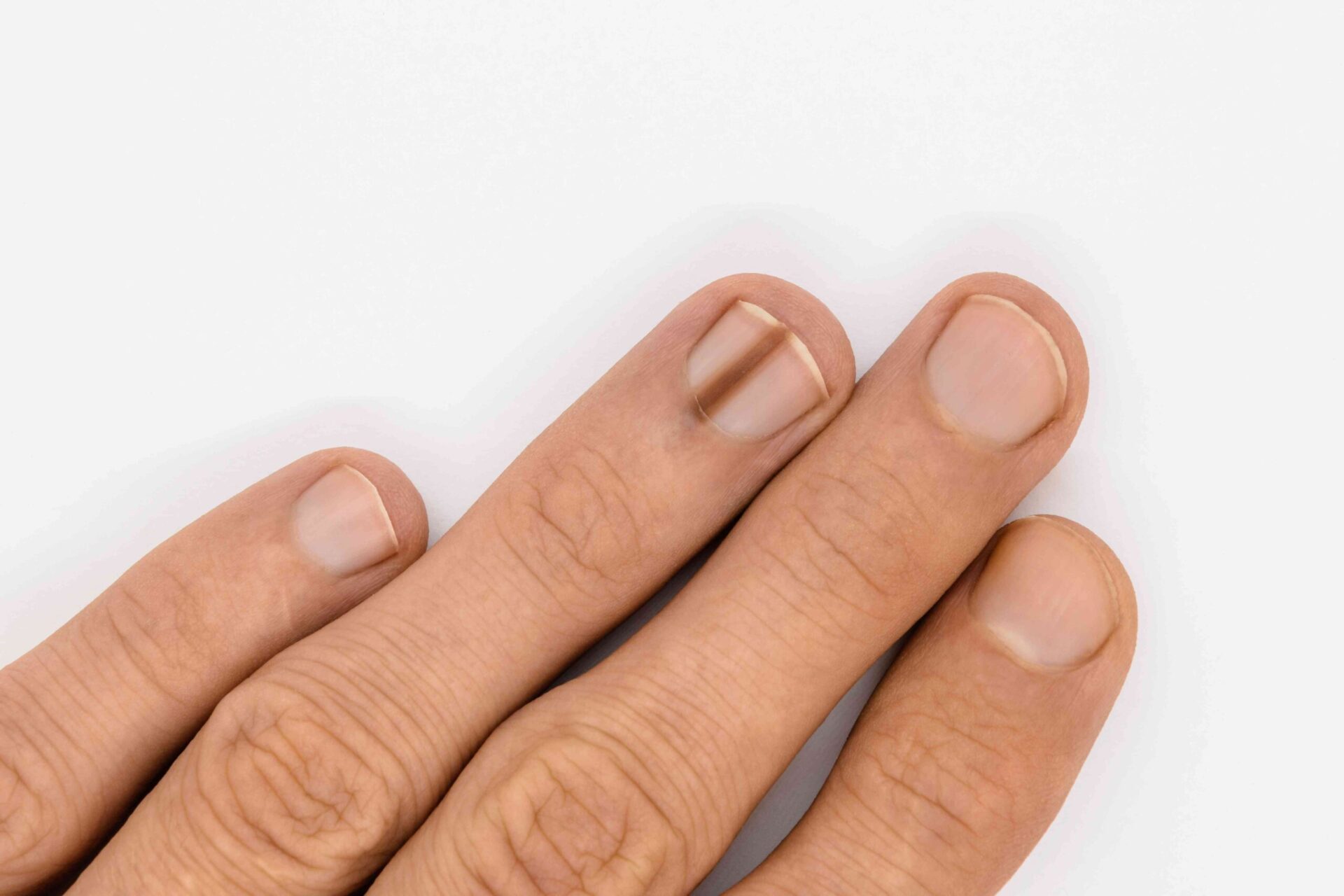When one spots a black line running along their nail bed, it might signify a condition known as melanonychia. This is a dark pigmentation streak that sometimes may just be a normal color variation, especially in individuals with darker skin tones.
However, melanonychia could also be a symptom of other conditions such as injuries, particular medications, infections, skin conditions, or even endocrine disorders such as Addison’s disease or hyperthyroidism. In rare cases, it can even be a sign of melanoma, a type of skin cancer. Therefore, while a black line on one’s nails doesn’t typically warrant immediate worry, it is advisable to consult a healthcare provider whenever nail color, shape, or texture changes are observed. Dermatologists, doctors specialized in diagnosing and treating conditions related to nails, skin, and hair, are adept at determining the cause of melanonychia and providing treatment options accordingly.
Melanonychia often appears as a longitudinal streak running from the cuticle to the nail tip. The color varies from dark brown to grey or black, and the thickness can range from a thin pencil-like mark to a broader, more noticeable band. In some rare cases, a black line might stretch horizontally across the nail. Depending on the cause, other nail changes may occur, such as alterations in shape, texture, or thickness, cracked or splitting nails, or skin discoloration around the affected nail.
Racial melanonychia is a condition caused by an increase of melanocytes within the nail matrix that can cause black lines on the nails. These melanocytes generate melanin, which is a natural pigment providing color to your skin, hair, and eyes. Normally, the nail matrix contains dormant melanocytes that do not produce pigment, thereby keeping fingernails and toenails translucent. However, these melanocytes can become active and start producing pigment, leading to the formation of black lines.
Physical trauma to the nail, either from accidents such as heavy objects falling onto the nail or fingers getting crushed in doors, can cause black lines on the nail. Repeated trauma to the nail matrix, such as the habitual biting or picking of nails, can also lead to a black line on one or more nails. Moreover, medications or treatments for conditions like cancer, malaria, HIV, fungal infections, bacterial infections, or inflammatory conditions like arthritis can cause black lines on the nails. Treatments such as chemotherapy and the use of antifungal drugs or sulfonamide antibiotics are some typical examples.
One should also note that diagnostics like x-rays on hands and feet or undergoing therapies like phototherapy can increase the risk of developing black lines on nails. Nail melanoma, a type of skin cancer that affects melanocytes, typically affects the thumb, the big toe, or the index finger and is marked by a vertical dark brown or black line running along the nail.
Systemic health conditions like Addison’s disease, Cushing’s syndrome, hyperthyroidism, Graft vs. host disease, or HIV can cause black lines on multiple fingernails and toenails. Other causes encompass protein, vitamin D, and vitamin B12 deficiencies, fungal nail infections, heart conditions like endocarditis, heavy metal poisoning from arsenic or mercury exposure, or inflammatory skin conditions.
Consulting a healthcare provider for any unanticipated nail changes is crucial, especially if a black line appears suddenly, starts to widen or darken, or is observed on multiple nails. Upon visual inspection by a dermatologist, necessary diagnostic tests can be ordered to provide an accurate diagnosis. Treatments differ based on the underlying cause but mostly will consist of close monitoring of the black line over time. Sometimes, if a medication is causing the black line, it is usually expected to disappear after eight weeks of treatment cessation. If there are any underlying health conditions causing the nail changes, they will need to be treated accordingly, and in turn, the nail discoloration is resolved.
Prevention of black lines on nails might not always be possible, but maintaining nail health can significantly lower the risk of trauma-related changes. Regular nail hygiene, refraining from biting nails, and using proper hand protection to avoid injury can help. However, if a black line appears, early diagnosis is key to treat any underlying conditions requiring attention and prevent complications. It becomes crucial to make an appointment with a primary care provider or a dermatologist to properly address and treat the issue.





![“Kerassentials Review” : [My Updates Reviews 2024] — Does It Work & Is It Safe? 4 049e8bfe 6112 4c16 aa9b b331dee37d90 “Kerassentials Review” : [My Updates Reviews 2024] — Does It Work & Is It Safe?](https://beautinews.com/wp-content/uploads/2024/10/049e8bfe-6112-4c16-aa9b-b331dee37d90.jpg)